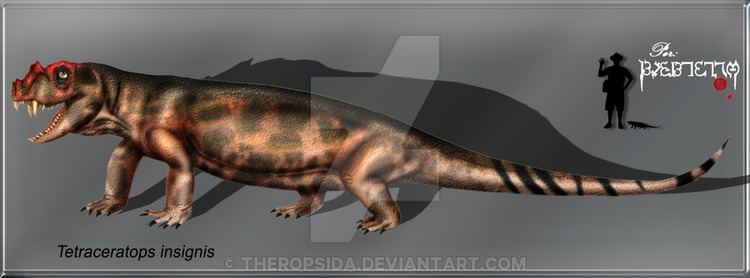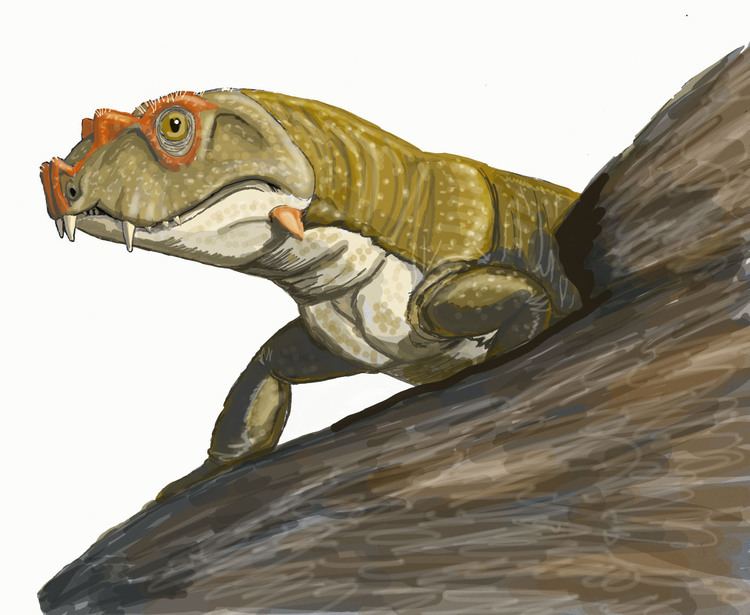Phylum Chordata Order Therapsid | Scientific name Tetraceratops insignis Rank Genus | |
 | ||
Similar Therapsid, Biarmosuchia, Sphenacodontidae, Anomodont, Dinocephalia | ||
Tetraceratops insignis ("four-horned face emblem") is an extinct synapsid from the Early Permian that may be the first known representative of Therapsida, a group that includes mammals and their close extinct relatives. It is known from a single 90 mm (3.5 in) long skull, discovered in Texas in 1908.
Contents

Description

Contrary to its genus name, Tetraceratops actually has six horns, one pair being on the premaxilla bones, one pair on the prefrontal bones, and one pair on the angular processes of the mandible. When it was discovered and described in 1908, the skull was still embedded in a matrix, and only the premaxilla and prefrontal pairs were visible. In life, thus, it would have resembled a large lizard with four horns on its snout, and a pair of large spines emanating from the corners of its jaw.

In addition to horns, Tetraceratops also had an impressive set of teeth. The second pair of teeth on the maxillary bones were large and fang-like. Likewise the first teeth in the upper jaw were long and dagger-like.
Classification
Tetraceratops was originally identified as a member of a group called Pelycosauria, an evolutionary grade of synapsids more basal than therapsids. It has been variously grouped in the family Sphenacodontidae, which is closely related to Therapsida, and Eothyrididae, which is more distantly related. Recent phylogenetic studies classify it as either a pelycosaur-grade synapsid or the basalmost therapsid, meaning that its exact phylogenetic placement is still uncertain.
